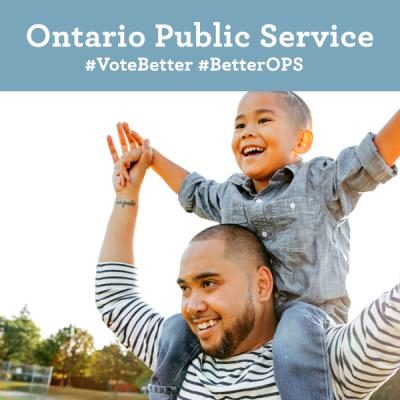Health Care

Public health care is part of the Canadian identity, and it remains a top priority for all voters.
Medicare is based on the principle that we ought to receive health care based on need, not our ability to pay. It is the mark of a compassionate, equitable, and fair society; this is what makes us proud of our system.
We know that we are healthier when health care is fully public. That’s why better health care means an expanded public system – with universal drug coverage, fully public home care, blood services, long-term care, dental care, and improved mental health care.
The health care funding increase in the 2018 Ontario Budget doesn’t keep pace with the 5.2% health care inflation rate.
For nearly a quarter of a century, our health care system has been under attack. Public health care services are being cut and privatized. While regular Ontarians continue to suffer, an elite few reap the spoils.
Inequality is growing, as more services are downloaded and privatized, and patients are increasingly forced to pay for these services out-of-pocket – often when they are least able to pay. There has been a surge in precarious work; with more part-time employment, less pay, and poorer working conditions.
Despite significant one-year investments outlined in the 2018 provincial budget, health care funding is still lagging behind; we must #VoteBetter for Ontario.
#BetterHealthCare means a better Ontario. Let’s #VoteBetter
Platform Priorities
Stop outsourcing and privatizing public health care services and bring privatized services back into the public sector.
Protect and improve public health care by conducting health-system planning, and investing in the services and frontline staff that are the backbone of the system.
Guarantee annual health care funding increases that are tied to the health care inflation rate.
Paramedic Services
Paramedic services are central to emergency medicine in Ontario. But our paramedics and Ambulance Communications Officers (ACOs) know that our system is not perfect.
Our province’s hospital bed crisis means that paramedics face major hospital offload delays – with an outdated dispatch system and rising community demands continually stressing the system.
Positive changes are possible, but Ontario’s government has opened the door to a potentially costly and dangerous plan known as the fire-medic model.
Ontario Paramedics and ACOs know that a better Ontario is one that is committed to improving pre-hospital care by implementing positive changes that will benefit all Ontarians.
Platform Priorities
Provide funding for ambulance services to meet demand that is growing by six per cent a year.
Provide our 911 dispatch system with better tools (including MPDS) to prioritize calls and deliver the right care, at the right time.
Increase the number of single-paramedic response units, backed up by ambulances, to reduce the response time in emergencies.
Build a registry for life-saving defibrillators and supporting more public defibrillators and CPR training.
Expand community paramedic programs that deliver non-emergency, in-home services and help reduce the number of 911 calls.
Hospitals
It’s undeniable; Ontario’s community hospitals are in crisis.
Nearly a quarter century of deep cuts has resulted in a capacity crisis. Hospitals are now overcrowded to the breaking point.
This means patients are laying on stretchers and gurneys in the hallways and high traffic areas of our public hospitals.
Short-staffing means our hospital workforce is increasingly overworked and burnt out.
Patients are released quicker and sicker. They and their families are increasingly forced to pay out-of-pocket fees at private clinics because they cannot get publicly funded care in a timely fashion, or because these services have been completely hived off and privatized.
A better Ontario is one where no public dollars are spent lining the pockets of private clinic owners and profiteers.
Platform priorities
Conduct hospital capacity planning to ensure that funding meets population needs, and to ensure proper levels of professional staff who provide therapies, rehabilitation, and diagnostics services.
Develop a long-term capacity plan for attracting people into these professional fields.
Restore long-term financial stability by ensuring annual funding increases of at least 5.3 per cent to maintain safe levels of hospital service, beds, and staffing.
Bring physiotherapy services back under the umbrella of OHIP. Patients should not suffer through excessive waits or be forced to pay huge out-of-pocket costs for needed services.
Stop contracting-out and privatizing hospital services, and bring privatized services back into the public sector.
Long-Term Care
In Canada, we have the lowest care levels in long-term care among comparable economies, and Ontario has the lowest standards in all of Canada. This is unacceptable.
Our province faces an aging population and a deepening crisis as more long-term care facilities come under the ownership of a handful of large corporations who cut corners by cutting staff, rationing supplies, and reducing food quality.
Nearly 84% of residents entering long-term care have high or very high needs as a result of cognitive or behavioural problems.
Studies have shown that for-profit homes in Ontario have higher death rates, hospitalization rates, and higher rates of falls, incontinence, and use of restraints.
Staff are increasingly overworked, rushed, and expected to do more with less. Patients are sicker and the complexity of care is growing. Exposure to violence within long-term care has spiked. Staff and residents are no longer safe.
For a better Ontario, we must invest in publicly owned and managed long-term care. #BetterLTC means improved access and care levels.
Platform priorities
Improve staffing ratios and implement a minimum standard of 4 hours of hands-on care, per resident, per day.
Improve access to publicly owned and managed long-term care beds – that is, staffed beds – to a level that meets population need.
Conduct health system capacity planning, and ensure all new capacity in the long-term care sector is fully public – ownership matters.
Mental Health Care
Across Ontario, workers in the mental health sector are facing increasing exposure to violent assaults. Frontline workers and their unions continue to report that many employers are not doing enough to control workplace violence – neither through appropriate risk assessments nor prevention procedures.
All workers have the right to be safe at work. If staff are not safe, neither are patients or clients.
Like so many others sectors in the health care system, decisions are no longer being made on the basis of clinical rationale and patient need, but rather, on the basis of budgets.
A better Ontario is one where all workers can go to work without fear for their well-being or for their life.
Platform priorities
Improved health system planning; implementation of decision-making processes that include frontline mental health sector workers.
Improved workplace health and safetyfor staff and patients/clients by implementing the system-wide use of the Violence, Aggression and Response Behaviours Tools(VARB).
Amending the Workplace Safety and Insurance Actto include health care workers under the presumptive legislation with respect to post-traumatic stress disorder (PTSD).
Increased base budget fundingfor mental health services across all sectors







